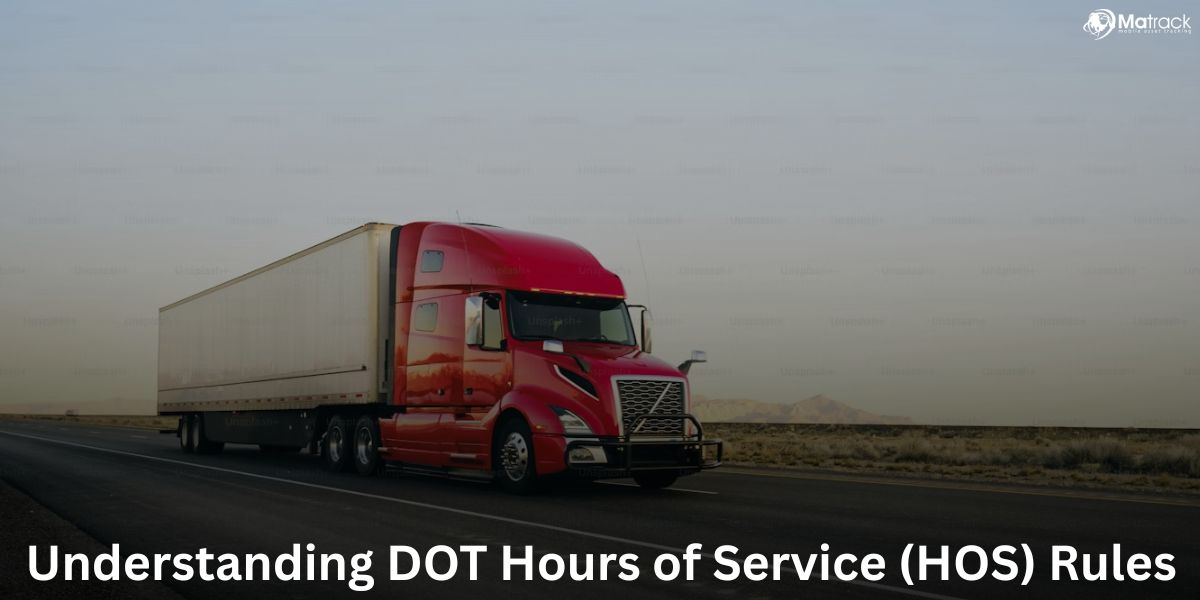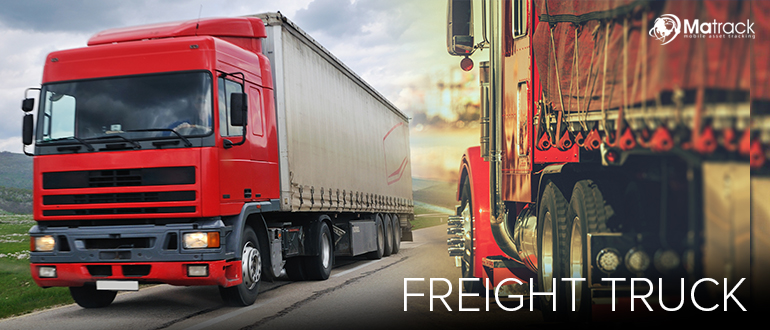Key Takeaways
- LTL freight shipping is ideal for transporting smaller shipments by sharing trailer space and reducing overall costs.
- It operates through a hub-and-spoke model, involving multiple stops for sorting, transfer, and final delivery.
- LTL offers benefits like lower costs, flexible shipping, and sustainability but involves longer transit times and stricter requirements.
- Matrack enhances LTL shipping with GPS tracking, ELD compliance, and dash cams for better visibility, safety, and documentation.
What Does LTL Freight Shipping Mean?
Less-than-truckload (LTL) freight shipping means transporting smaller freight loads that don’t require a full truck. Instead of booking an entire trailer, businesses only pay for the space their shipment takes up.
A company moving six pallets across state lines, for example, will have their freight share space with shipments from other businesses. This approach lowers transportation costs and reduces the number of trucks on the road, which supports environmental sustainability.
How LTL Freight Shipping Works?
LTL freight shipping operates on a hub-and-spoke model, allowing carriers to efficiently manage multiple shipments from different origins to various destinations. This structured network helps optimize truck space and reduce shipping costs.
Pickup
Carriers begin by collecting freight from several shippers located within a specific geographic area. These pickups usually happen using local trucks that then transport the freight to a nearby terminal.
Local Terminal
At the terminal, shipments are unloaded and sorted based on their destinations. This sorting process determines which linehaul routes the freight will take next.
Linehaul
Freight is loaded onto long-haul trucks that move between terminals in different regions or states. These trucks follow fixed routes that connect major logistics hubs across the country.
Delivery Terminal
Once the freight reaches the destination terminal, it’s unloaded and prepared for final delivery. Local delivery trucks then handle the last leg of the journey to the consignee’s address.
Why LTL Freight Shipping Is Essential?
LTL freight shipping is a smart choice for companies moving moderate-sized loads that don’t fill an entire trailer. It gives businesses a cost-effective way to ship goods without compromising efficiency.
Cost Efficiency
Businesses only pay for the portion of truck space their freight uses, not the entire trailer. This shared-cost structure makes it easier to control shipping expenses.
Inventory Management
Shipping smaller loads more often helps avoid excessive inventory buildup. It becomes easier to manage stock levels and reduce the need for warehouse space.
Frequent Shipments
With LTL, businesses can ship as often as needed without waiting to fill a truck. This flexibility supports faster restocking and better responsiveness to customer demand.
Read More: What Is A Freight Truck?
What Are The Key Components of LTL Shipping?
LTL relies on several core logistics components to function smoothly.
Freight Class
Freight is categorized by National Motor Freight Classification (NMFC) codes. These codes depend on:
- Density: Pounds per cubic foot.
- Stowability: Ease of loading and storage.
- Handling: Special care or equipment needed.
- Liability: Risk of theft or damage.
LTL carriers use freight class to determine shipping rates and proper handling procedures.
Bill of Lading (BOL)
The BOL is a legal contract between the shipper and carrier. It includes:
- Origin and destination addresses
- Freight details (weight, quantity, packaging)
- NMFC freight class
- Special instructions
Correct BOL entries ensure accurate delivery and billing.
Accessorial Charges
LTL shipping often includes accessorial fees for services beyond standard pickup and delivery:
- Liftgate service
- Inside delivery
- Limited access locations
- Residential delivery
Benefits of LTL Freight Shipping
LTL freight shipping brings both financial and operational advantages that help businesses streamline their logistics. It’s especially beneficial for companies that ship smaller loads frequently.
Lower Costs for Small Shipments
LTL is ideal for shipping between four to ten pallets without paying for a full truckload. Costs are divided among several shippers, which keeps expenses lower and improves overall budget control.
Eco-Friendly Shipping
By consolidating multiple shipments into one truck, LTL reduces the number of vehicles on the road. This helps cut carbon emissions and supports more sustainable transportation practices.
Flexible Logistics
Businesses can ship goods more often without waiting to accumulate full-truck quantities. This flexibility supports agile inventory systems and faster response to customer needs.
Professional Handling
LTL carriers are experienced in managing shipments that require multiple stops and careful coordination. Their expertise ensures more accurate delivery times and reliable tracking throughout the journey.
Limitations of LTL Freight Shipping
While LTL shipping offers clear advantages, it does come with specific challenges that businesses must consider before choosing this method.
Longer Transit Times
LTL shipments move through multiple terminals and transfer points, which naturally extends delivery times. This makes it less suitable for urgent or time-sensitive deliveries.
Higher Risk of Damage
Freight is handled several times between pickup and delivery, including loading and unloading at different terminals. This added handling increases the chances of damage if the cargo isn’t well-packaged.
Strict Freight Requirements
Carriers require precise documentation and correct classification of all LTL shipments. Mistakes in weight, dimensions, or NMFC codes often lead to extra fees or delivery delays.
LTL vs. Full Truckload (FTL) Shipping
Understanding the difference between LTL and FTL helps choose the right freight solution.
| Factor | LTL Shipping | FTL Shipping |
| Shipment Size | 150 to 15,000 pounds | Over 15,000 pounds |
| Cost | Shared cost based on space used | Flat rate for entire truck |
| Transit Time | Longer due to multiple stops | Faster due to direct route |
| Risk of Damage | Higher due to handling at terminals | Lower with minimal handling |
| Tracking Accuracy | Moderate, based on terminal scans | High, direct truck movement |
When to Use LTL Freight Shipping?
Use LTL shipping when:
- Shipment is too large for parcels, too small for full truckload.
- Delivery timelines allow flexible transit.
- Cost reduction is more critical than speed.
Avoid LTL when:
- Freight is fragile or time-sensitive.
- A full truckload is already near capacity and more cost-effective.
What Is the Future of LTL Freight Shipping?
LTL freight shipping is heading toward a smarter and more connected future. As businesses demand faster deliveries and better visibility, carriers are using new tools to meet those expectations without raising costs.
Smarter Tech, Better Planning
Routing software and real-time data are making it easier to plan efficient trips. With better load optimization and fewer delays, shipments get where they need to be with less hassle.
Telematics Takes the Lead
Telematics is changing the way LTL fleets run. With GPS, engine data, and real-time updates, carriers can track every truck on the road. This helps avoid delays, spot problems early, and keep customers in the loop.
Digital Tools for Faster Booking
Freight platforms are now doing what phone calls and emails used to. Shippers can get quotes, schedule pickups, and track deliveries all in one place—saving time and cutting down on errors.
A Greener Way to Ship
Carriers are finding better ways to move freight without hurting the environment. Electric trucks, cleaner fuels, and smarter routes are becoming part of the daily routine for many LTL providers.
Working Together, Moving Smarter
By sharing space and data, different carriers are working together more than ever. This helps cover more ground without adding extra trucks, which keeps prices steady and reduces waste.
Why Choose Matrack for LTL Freight Shipping?
Matrack offers GPS fleet tracking that helps monitor every truck in real time. This allows LTL carriers to track shipments accurately and update customers quickly.
ELD compliance solutions from Matrack keep all driver logs and compliance records automated and error-free. For LTL carriers making multiple stops, this helps avoid delays and stay within regulations.
Matrack’s fleet dash cam records every trip and give proof in case of claims or disputes. This is useful in LTL shipping where freight changes hands multiple times and tracking every move matters.



